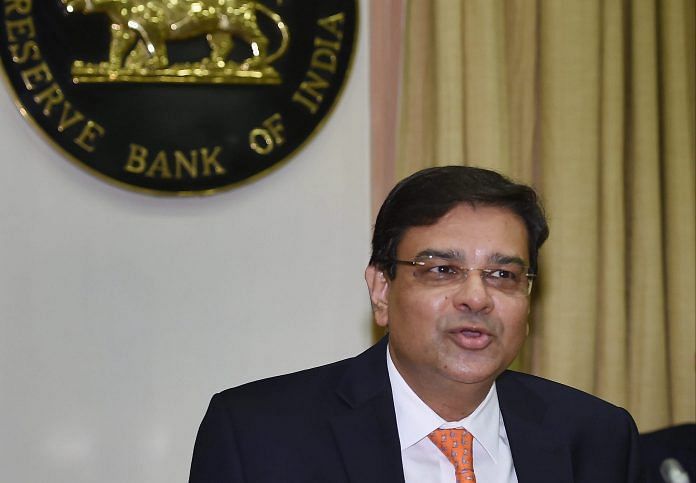The central bank has said that the economic recovery is on a stable path, but said inflation risks persist.
New Delhi: The Reserve Bank of India left policy rates untouched Wednesday, saying the “nascent recovery” needs to be carefully nurtured. The central bank also stressed on the need to push growth through stable financial management.
The Monetary Policy Committee kept the short-term lending rate at 6 per cent in its sixth bi-monthly policy review of the fiscal year.
While the repo rate is at a seven-year low, the reverse repo rate also remained unchanged at 5.75 per cent. The central bank last cut the key lending rate by 25 basis points in August 2017.
The central bank has raised its inflation forecast for the fourth quarter of the fiscal to 5.1 per cent from 4.3-4.7 per cent in the second half of the fiscal.
The RBI, in its bi–monthly monetary policy statement, forecast headline inflation to be in the range of 5.1 to 5.6 per cent in the first half of FY 19, thereby breaching its medium term target of 4 per cent.
The central bank noted that the economic recovery is on a stable path, but said upside risks to inflation persist. The RBI says this is driven by an increase in house rent allowance (HRA) in some states, rising crude oil prices, and overspending by the central government.
The government has overshot its fiscal budget target for fiscal 2017-18 and raised the deficit targets for fiscal 2018-19.
The RBI now sees second-half inflation for fiscal 2019 in the range of 4.5 to 4.6 per cent on the back of a softer food inflation forecast, and the assumption of a normal monsoon.
“To tame possibility of inflation, RBI needs to develop the conviction of asking banks to lend against infrastructure projects at subvention rates of interest. Merely worrying about inflation, and not bringing down the cost of funds for infrastructure projects is preventing private investments. Without adequate infrastructure, supply constraints can’t be removed and so the inflation,” said Deven R. Choksey, MD of KR Choksey.
The Gross Value Added (GVA) projection for fiscal 2018-19 stands at 7.2 per cent. For the fiscal 2019, the RBI sees first-half GVA ranging between 7.3 to 7.4 per cent and 7.1 to 7.2 per cent in the second half. The stabilisation effect of GST and early signs of revival in investment will influence the revival in GVA, the central bank said.
In addition, the recapitalisation of banks and large distressed borrowers being referred to Insolvency and bankruptcy code will further improve credit inflows and lead to fresh investment in the economy.
On the issue of rising bond yields, which have been on the rise and have reached a staggering 7.56 per cent from 6.4 per cent, RBI governor Urjit Patel said, “The firming of yields abroad because of the changes in the stance of the systematic central banks, especially the US Fed, and other fiscal developments in the US have been significant.”
Over the last six weeks the US 10 year yields have hardened by 40-50 basis points. Moreover, over the last six months, domestic inflation has increased, mostly because of hardening of crude oil prices.
On the domestic front, because of an uptick in economic growth, there are now competing demands for financial capital, which puts upward pressure on all returns. Adding to it, the development on the fiscal side, where there is fiscal slippage at three levels has all been factored in to increase the bond yields.
“Apart from a policy move, bond markets were awaiting some guidance or steps from RBI to address rise in bond yields. However, the RBI has cleared that its liquidity infusion process is largely agnostic to asset prices and they will consider infusion depending upon evolving liquidity conditions . The market hopes on OMO purchases remains unmet as of now,” said Kunal Shah, Fund Manager – Debt, Kotak Mahindra Life Insurance Limited.
“We see 10 year yields in the range of 7.30-7.60 per cent till year end and markets will closely watch movement of crude oil prices, formulae used for cost of production for MSP hikes and signals/actions from RBI and government on elevated bond yields.” he said.



